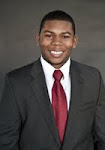
The 17 Seventeen and Park 17 project, designed by Good Fulton & Farrell Architects, is a development of a 13-story office tower and 19-story residential tower sited together on a single six-level parking garage podium with new retail construction wrapping three sides of the block. Equidistant from the Victory development and the Arts District, and sited at the crossroads of uptown and downtown, this project is arguably at the epicenter of the new Dallas urban landscape. The 17Seventeen office tower was Pre-Certified Gold by USGBC in January 2009 under the LEED CS rating system, and the Park 17 residential tower is pursuing LEED NC certification.
17Seventeen McKinney, a 379,000 square foot Class AA office building under construction in Uptown, has secured the title of the first gold LEED-precertified high-rise office building in the Dallas area. The U.S. Green Building Council has completed Pre-Certification of the building, which is slated for completion in the spring of 2010. Granite Properties, the developer of the office tower, launched an initiative three years ago to make new developments environmentally friendly. In addition, Granite said it decided to convert existing buildings it owns to environmentally conscious properties.
URBAN HERITAGE
The block of 17Seventeen is a modernist version of an Italian hill town, raised above the surrounding area on the 6-story plinth, with both residential and office occupants taking advantage of the 7th level amenity deck and it’s immediate views of the Dallas skyline. Contained within the block itself will be 292 apartments, 379,000 square feet of office space, a bank, a restaurant and an additional 6,000 square feet of retail space. Within 1/2 mile of the American Airlines Center, Victory Plaza, the W Hotel, the House of Blues, the Ritz Carlton, the Crescent Hotel and shops, the Winspear Opera House, the Wyly Theater Center, Annette Strauss Artist Square, the Meyerson Symphony Center, the Nasher Sculpture Garden, the Dallas Museum of Art, the Crow Collection of Asian Art, the proposed Museum of Nature & Science, the Arts Magnet High School, First Baptist Dallas, First United Methodist Church of Dallas and Guadalupe Cathedral, occupants of the project are easily within a 10 minute walk of any of these venues. Consequently, the Community Connectivity and Development Density of this project is a top sustainable feature.
SUSTAINABLE STRATEGIES
As a part of the commitment of Granite Properties to maintaining leadership in corporate sustainable office construction, the building has been reviewed to insure that in-coming tenants will be able to meet the increased requirements of the newly released LEED version 3 for Commercial Interiors. LEED-CI version 3 sets a higher baseline standard for water efficiency as a prerequisite to achieving certification than was used in the previous LEED Rating Systems. In order for the future tenants to achieve the 20% water efficiency prerequisite, the team has increased the water efficiency of the core building, even though it had previously exceeded the LEED-CS version 2.0 standard by 30%. These adjustments will enable tenants to pursue LEED Certification for their commercial interiors under LEED version 3 and will aid Granite Properties in pursuing LEED-EBOM for the building when the project becomes eligible.
BY THE NUMBERS
A brief overview of the achieved LEED Core & Shell credits utilized in the building pre-certification is listed in the following table:
Sustainable Sites 12
Water Efficiency 3
Energy and Atmosphere 4
Indoor Environmental Quality 9
Innovation in Design 5
Total (LEED-CS v2.0) 37
North Texas Green Building Council



